Discover the ultimate guide to mastering your snowboard stance width, ensuring optimal balance, control, and performance on the slopes. Learn how to tailor your stance for the perfect ride.
Understanding the Importance of Proper Stance Width
Proper stance width is crucial for balance, control, and overall performance on a snowboard. A well-set stance ensures stability, allowing you to generate power and maneuver effortlessly. It also enhances comfort, reducing fatigue during long rides. Incorrect stance width can lead to poor edge control, making it harder to turn or stop. Additionally, it can cause discomfort and inefficiency, especially on varied terrain. By optimizing your stance width, you can improve responsiveness, adapt to different riding styles, and enjoy a more enjoyable and effective snowboarding experience. Proper stance width is the foundation of a confident and capable ride.
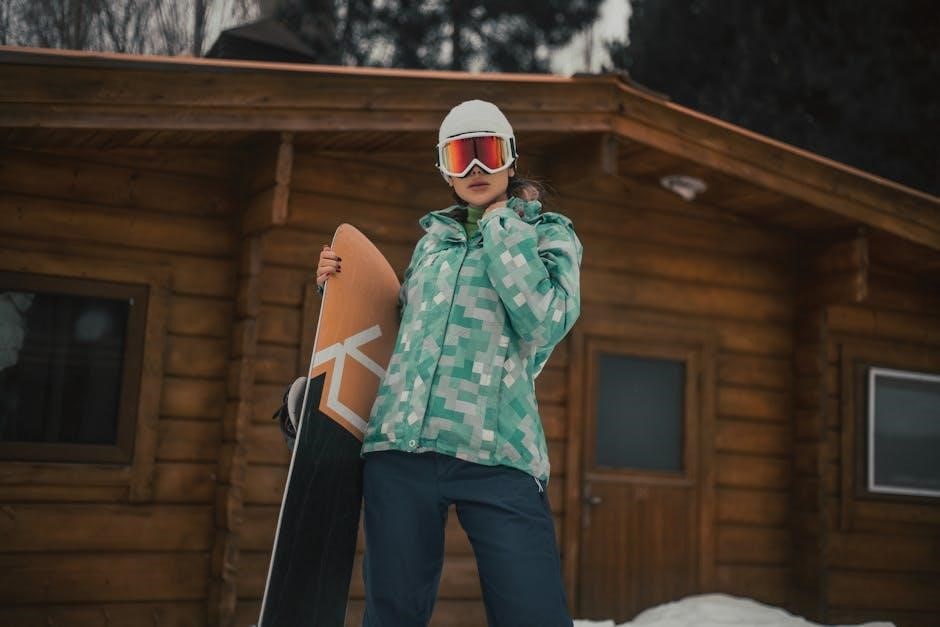
What is Snowboard Stance Width?
Snowboard stance width refers to the distance between your bindings, influencing balance, control, and overall performance. Proper width enhances stability and responsiveness, key for any riding style.
Defining Stance Width and Its Role in Snowboarding
Snowboard stance width is the distance between the two bindings on the board, directly influencing balance, control, and overall riding performance. It serves as the foundation for effective turning, stability, and maneuverability. A proper stance width ensures optimal weight distribution, allowing riders to maintain balance and generate power effortlessly. While personal preference plays a role, stance width is typically shoulder-width or slightly wider, depending on height and riding style. Narrow stances can improve agility, while wider stances enhance stability at higher speeds. Adjusting stance width is crucial for tailoring the riding experience to individual needs and goals.
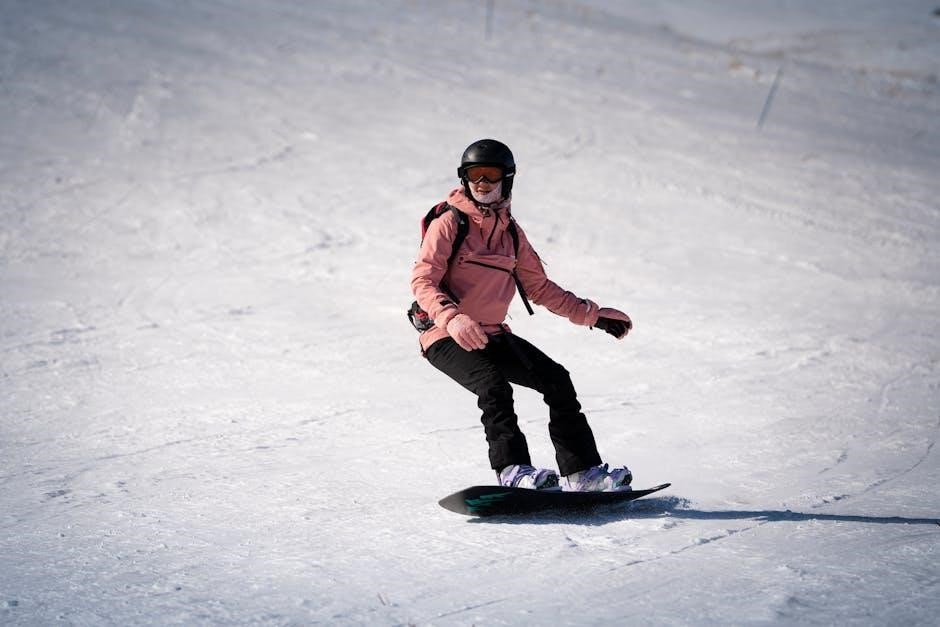
Factors Influencing Stance Width
Rider height, weight, and boot size significantly impact stance width, along with personal preference and riding style, ensuring optimal balance and control on the snowboard.
How Height, Weight, and Boot Size Affect Stance
Your height, weight, and boot size are critical in determining your ideal snowboard stance width. Taller riders typically prefer a wider stance for better balance, while shorter riders may opt for a narrower setup. Weight also plays a role, as heavier riders may benefit from a wider stance for stability. Boot size is equally important, as larger boots require more space between bindings to avoid discomfort. These factors combined help create a balanced, efficient stance tailored to your body, ensuring optimal performance and comfort on the slopes.
Impact of Riding Style on Stance Width
Your riding style significantly influences your snowboard stance width. Freestyle riders often prefer a wider stance for stability during tricks, while carvers opt for a narrower stance to enhance edge control. Freeriders may adjust their stance width and setback for better float in powder. Aggressive riders might favor a slightly wider stance with more setback, whereas casual cruisers prefer a balanced, comfortable setup. Tailoring your stance width to your riding style ensures optimal performance, whether you’re carving groomers, exploring backcountry, or hitting the park.
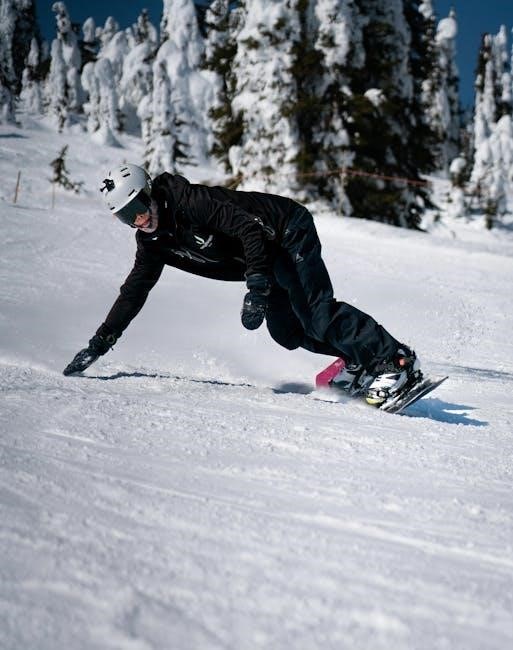
How to Measure Your Ideal Stance Width
Start with your feet shoulder-width apart as a baseline. Measure the distance between your binding centers, adjusting for comfort and riding style. Experiment to find your sweet spot.
Step-by-Step Guide to Determining Your Stance
Start by standing naturally with your feet shoulder-width apart. Measure this distance to establish your baseline stance. Adjust based on height, weight, and boot size—taller riders may prefer a wider stance, while shorter riders opt for narrower. Consider your riding style: freestyle riders often favor a wider stance for stability, while freeriders might narrow it for agility. Mark your snowboard with tape or a ruler to visualize the setup. Test the stance by crouching and shifting your weight, ensuring comfort and control. Fine-tune the width incrementally, riding in each configuration to find your ideal balance.
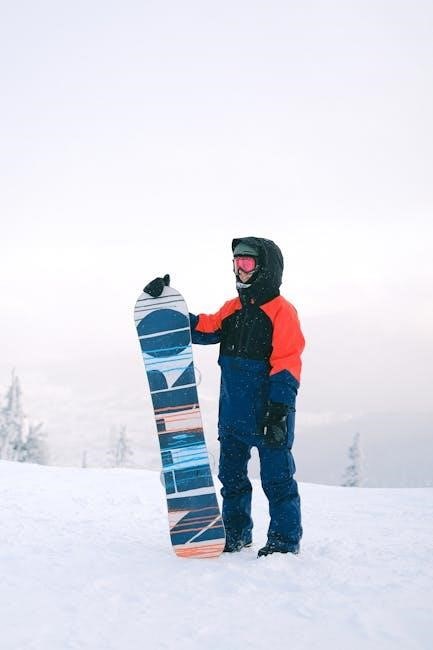
Understanding Stance Angles
Stance angles influence turning efficiency and control, with forward angles enhancing performance for carving, while more neutral angles suit cruising and all-mountain riding styles.
How Stance Angles Work with Stance Width
Stance angles and width are interconnected, as both influence your balance, control, and maneuverability. A wider stance often pairs with more angled bindings for better stability, while narrower stances may require less angle for precise turns. Riding style significantly impacts this relationship—freestyle riders might prefer a slightly wider stance with neutral angles for flexibility, whereas carvers benefit from narrower stances and forward angles for sharp, responsive turns. Experimenting with both width and angles ensures optimal performance, as the right combination enhances edge control, reduces fatigue, and aligns with your riding goals and terrain preferences.
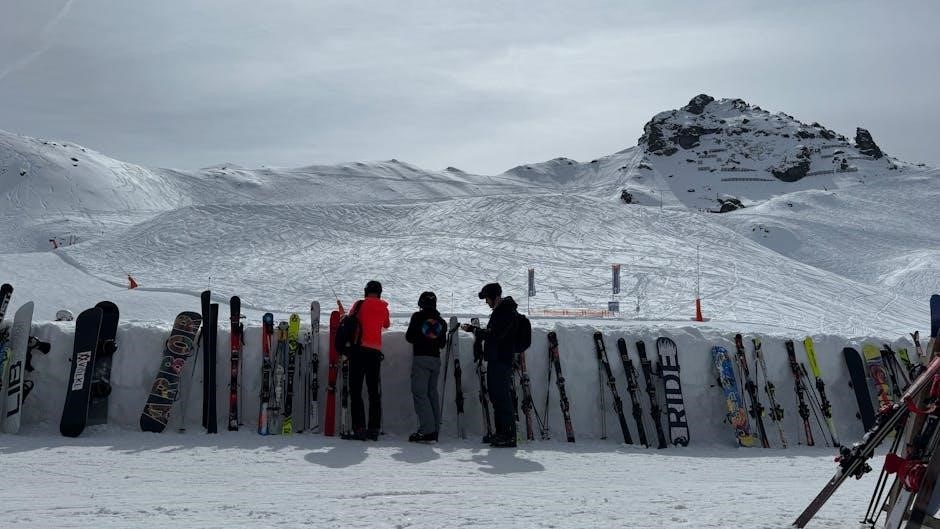
Stance Setback: What You Need to Know
Stance setback adjusts your position on the board, affecting float in powder and stability. Start neutral, then tweak for performance and comfort based on riding style.
Adjusting Stance Setback for Different Riding Styles
Stance setback varies based on riding style. For freeriding, a slightly setback stance enhances float in powder. Freestyle riders often prefer a neutral or slightly setback stance for better balance and pop. Carving requires minimal setback for precision and edge control. Adjusting setback ensures optimal performance and comfort, allowing riders to tailor their setup to their preferred terrain and technique. Experiment with small changes to find the perfect balance for your style and improve your overall snowboarding experience.
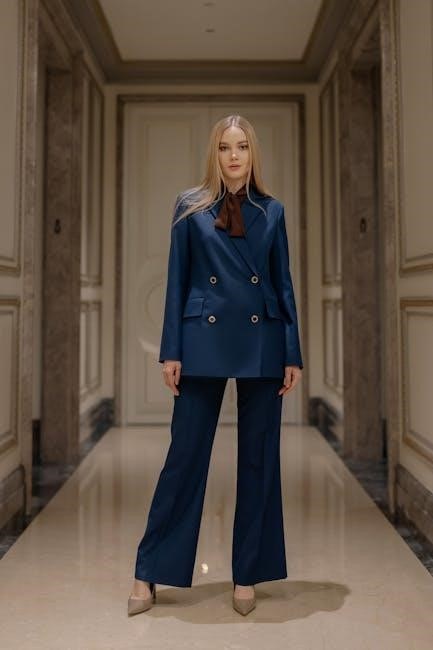
Adjusting Your Stance for Freestyle, Carving, and Freeriding
Optimize your stance for specific disciplines: wider for freeriding, narrower for carving, and balanced for freestyle. Adjustments enhance performance, stability, and maneuverability across varying terrains and riding styles.
Tips for Customizing Your Stance for Specific Disciplines
Customizing your snowboard stance for specific disciplines enhances performance. For freeriding, a wider stance improves stability and float in powder. Carving benefits from a narrower stance, allowing precise edge control and quicker turns. Freestyle riding requires a balanced stance for agility and pop; Experiment with subtle adjustments in width and angles to suit your style. Consider personal comfort and terrain conditions. Fine-tune your setup gradually, testing how changes affect your riding. Remember, optimal stance customization is key to unlocking your full potential on the mountain.
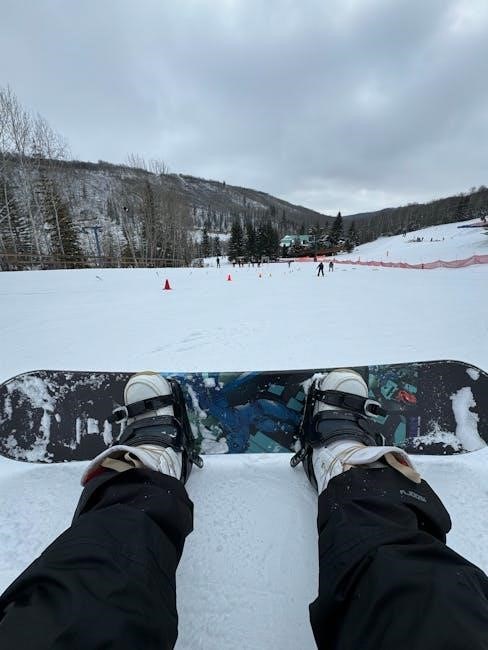
Common Mistakes to Avoid When Setting Up Your Stance
Avoid setting your stance too wide or narrow, as it can disrupt balance and control. Ensure proper alignment and adjust based on riding style for optimal comfort.
How to Ensure Your Stance is Comfortable and Efficient
To ensure your snowboard stance is both comfortable and efficient, start by setting your feet slightly wider than shoulder-width apart. Experiment with different widths to find a balance between stability and maneuverability. Keep your knees slightly bent and weight evenly distributed over both feet. Avoid overly aggressive stance angles, as they can strain your legs. Adjust your stance setback based on your riding style—forward for freeride, centered for freestyle. Test your stance on flat ground and make fine adjustments before hitting the slopes. A well-tuned stance enhances control, reduces fatigue, and boosts overall performance.
A well-adjusted snowboard stance is key to balance, control, and performance. Experiment with widths and angles to find your comfort zone. Proper stance customization enhances your riding experience and ensures maximum efficiency on the slopes.
Final Tips for Optimizing Your Snowboard Stance
Start with a stance slightly wider than shoulder-width for stability. Adjust your angles and setback based on riding style: forward for freestyle, setback for freeride. Experiment with widths to suit comfort and control. Ensure boots fit snugly to avoid shifting. Test different setups on flat ground before hitting slopes. Fine-tune your stance gradually, as small changes can make a big difference. Prioritize balance and ease of movement. Most importantly, trust your instincts—what feels right often performs best. Regularly reassess your stance as skills and preferences evolve.
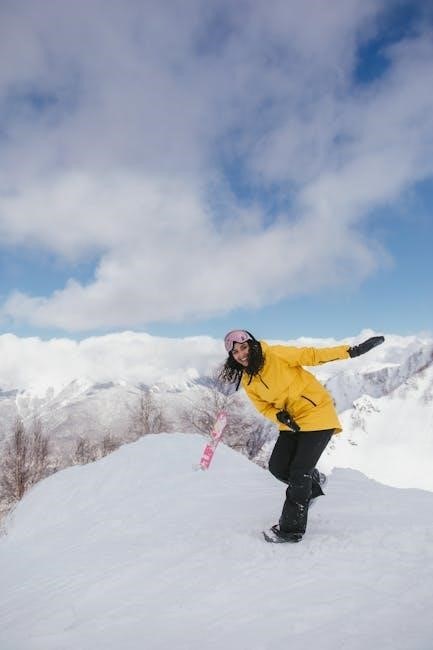
Final Summary
A well-adjusted snowboard stance enhances balance, control, and performance. Proper width, angles, and setback customization ensure optimal riding comfort and efficiency for any snowboarding style or terrain.
Key Takeaways for the Perfect Snowboard Stance
Finding the perfect snowboard stance is crucial for optimal performance and comfort. Consider your height, weight, boot size, and riding style when determining stance width. Stance angles and setback also play significant roles in tailoring your setup. Experiment with different configurations to find what feels best for you, whether you’re carving, freeriding, or freestyling. Don’t hesitate to seek professional advice for a customized fit. Remember, a well-adjusted stance enhances control, balance, and overall enjoyment on the slopes, making every ride more enjoyable.